There has always been a tendency for organizations to silo into discrete units, which can make it difficult to address many of the day-to-day problems that arise through normal business. Now, as the COVID-19 pandemic continues disrupting how company’s look and operate, it is more important than ever to have open channels of communication within an organization.
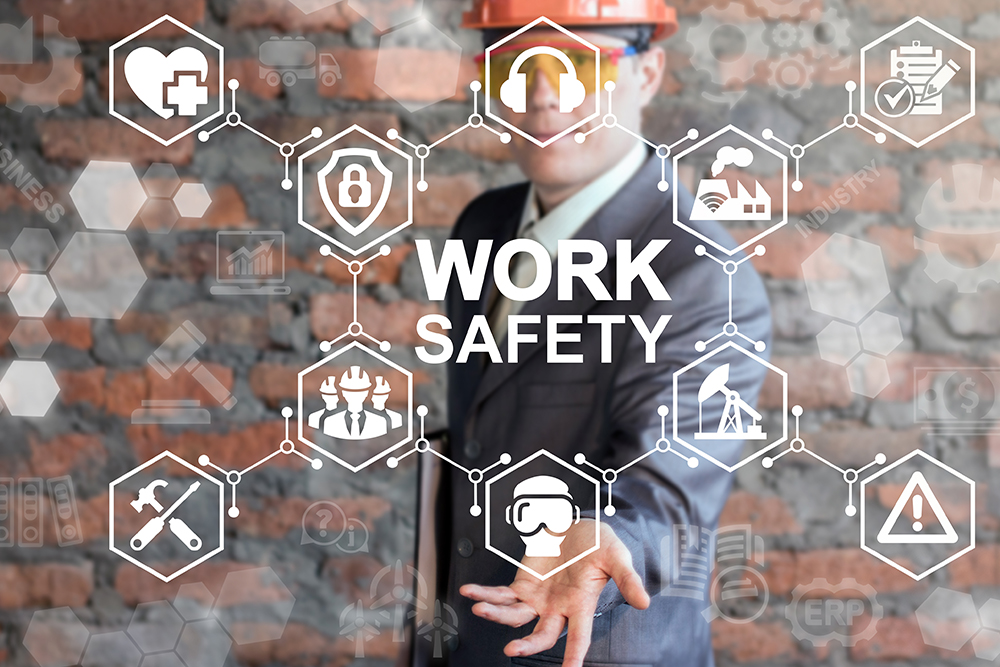
In this special episode of EHS on Tap, my colleague James Davis from the HR Works Podcast joins me to interview an environment, health, and safety (EHS) and a human resources (HR) professional from one of the largest private companies in the United States: Koch Industries, Incorporated.
Our collective goal is to better understand how EHS and HR work together, overcome challenges, and otherwise collaborate to make their workplace safe during a crisis.
Our guests are Walt Malone, VP of HR for Koch, and Sheryl Corrigan, director of environmental, health, and safety for Koch.
This episode was originally released July 7, 2020, and you can listen to the audio here.
James Davis: Hello everyone. And welcome to a special crossover episode of HR Works and EHS on Tap. I’m James Davis, editor of the HR Daily Advisor. I’m joined today by Justin Scace, editor of the EHS Daily Advisor.
Justin Scace: Thanks Jim. And thanks to our listeners for tuning into today’s episode. Today, we’re going to be talking to HR and EHS executives at one of the largest private companies in the United States, Koch Industries, incorporated, about how their departments work together in order to succeed. Based in Wichita, Kansas, Koch Industries owns a diverse group of companies involved in refining chemicals and biofuels, forest and consumer products, fertilizers, polymers, and fibers, process and pollution control systems, electronic software in data analytics, minerals, glass, automotive components, ranching, commodity training, and investments. With a presence in more than 70 countries, Koch companies employ 130,000 people worldwide. And about 65,000 of those are in the US.
Jim Davis: Our guests on the show today are Walt Malone, Vice President of Human Resources for Koch. And Sheryl Corrigan, Director of Environmental Health and Safety for Koch. Walt joined Koch in 1991 and is responsible for Koch Industries corporate human resources team, and the global market-based management capability, which provides training and development services to Koch companies. He serves on the board of Georgia Pacific Equity Holdings, LLC, and Koch Business Solutions LP, both subsidiaries of Koch Industries. Walt, welcome, and thank you for joining us today.
Walt Malone: Hey, thank you for having us here. We appreciate it.
Jim Davis: Absolutely.
Justin Scace: And we are also joined by Sheryl Corrigan, director of EHS for Koch Industries, where she provides oversight of Koch companies compliance with regulations and internal policy and tracking and ensuring follow-up on emerging issues. Sheryl was previously commissioner of the Minnesota Pollution Control Agency, advising the governor in helping set the strategic direction for the state on environmental matters. Sheryl, welcome, and thanks for joining us.
Sheryl Corrigan: Thanks. It’s a pleasure.
Justin Scace: To start off, could you both tell us a little about yourselves? What do you do in your current roles as the heads of human resources and environment health and safety at Koch Industries? And what drew you to pursue careers in HR and EHS in the first place?
Walt Malone: Well, I’ll go ahead and start with that. Thank you again for giving us the opportunity to participate in the podcast. And, so a little bit about my background, I oversee the HR function for the enterprise. A big portion of that is also really helping to drive market-based management, which is our philosophy, business philosophy and culture that Charles Koch created. And for anybody that would be interested in knowing more about Koch Industries, they can pick up a copy of Good Profit, which is a book that Mr. Koch wrote that describes a lot of the differences in our company philosophy compared to what you might see in other publicly traded companies.
Just for background, I started with a company in training and development and progressed along in my career over the 29 years in various roles of human resources, and had several stints in various businesses, but kept coming back to human resources because I really felt like it was where my real strength resides. And so have had a 29 year career with Koch Industries, most up in HR. But I think the real thing that attracted me to Koch was the differences in our management philosophy. It’s just such a different approach. It’s very refreshing and is really a key part of the success of the company.
Sheryl Corrigan: Yeah. Walt’s been here for…what was it? 29 years. And I’ve been with Koch for about 14 years now, so he’s 2x me. But I think it was Jim who gave my background, so I’m not going to go into that deeply. Aside from the fact that what really drew me to this company, I think Walt and I are pretty similar. He got a jump on me though, as I said, is really the vision and the way that the company is organized around that vision. Koch Industries vision really is focused on what the role of business in society really is. And all of the companies that Jim mentioned, as he was kind of going through the different areas that Koch Industries has interests in, really are focused on one thing, and that is making people’s lives better.
And we do that every day at Koch by making things like transportation fuels and architectural glass and fertilizer. And I could go on down software and electronics for that matter. We make people’s lives better by making the things that they want and need every day. But doing it in a responsible way, meaning using fewer resources than our competitors, and as I said, acting in a way that’s consistent with what our partners and our stakeholders and our customers and regulators would expect from us as a business. So that’s really what attracted me to the company.
And I think it’s very unique. When you think about business, most people think about it in terms of jobs and all of the economic benefits. And those are really important, I don’t mean to minimize it. But really all of that, all of the jobs and the economic benefits flow from whether you actually are truly making people’s lives better. And so that’s what we try to do every day. And we’ve got 130,000 people that are focused on coming to work every day and knock it out of the park for all of us.
Jim Davis: Well, thanks so much to both of you for helping characterize what it is you guys do. When we thought of this episode, Justin and I have worked together a long time, and I do the HR stuff and he does the safety and EHS stuff. And just like in our organization where those are separate departments, these are often separate departments if companies even have both of them. And so what we’re really curious is, in your organization, does HR and EHS collaborate continuously within your organization, or do you guys just sort of come together when you’re needed to?
Walt Malone: Well, let me take just a quick stab at that one, Sheryl, then you can add your commentary. From my perspective, one of the things that’s really important about the way that we are set up is we are set up as capabilities inside the organization, and everything we do is really to try to help the organization advance the goals of the organization. We collaborate across a broad spectrum of functions and capabilities to really try to achieve that end. And so I would say that, and a big part of what we do as capability leaders is really work to try to make sure we’re including the right people with the right knowledge and the right skill sets to figure out how we can do things better.
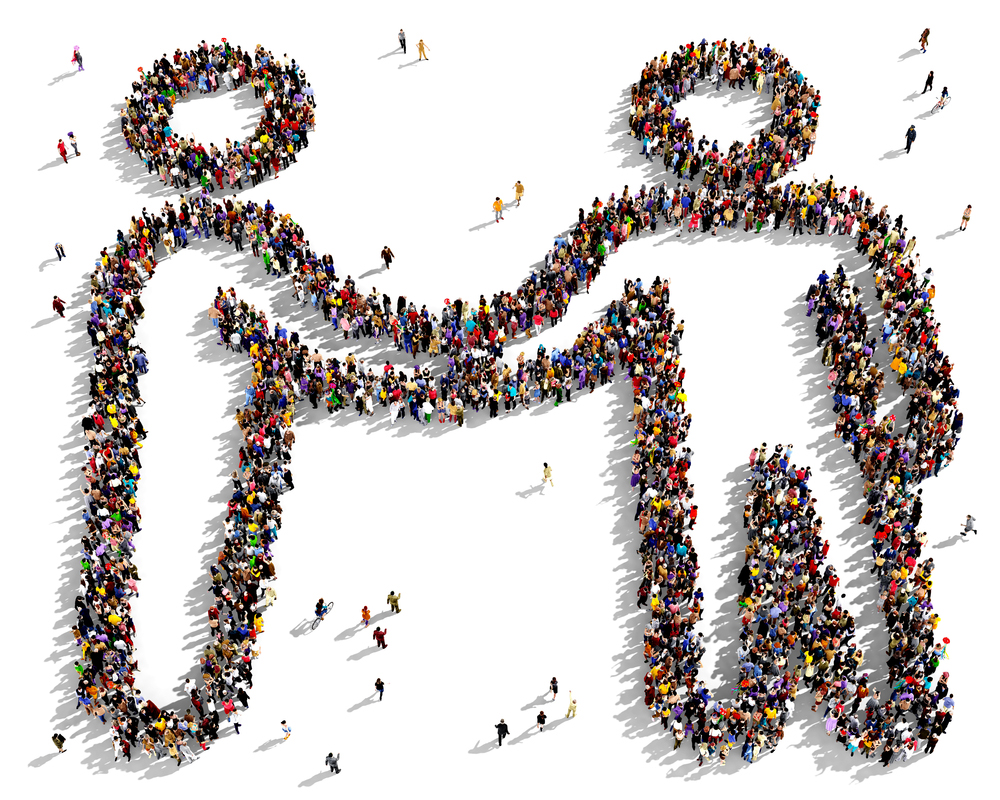
And so particularly with EHS and HR, as you can imagine, when you went through that long list of different businesses, we have operations all over the world and we’re an operating company. And where we really collaborate a lot, particularly at our operating sites where health and safety is such a big component of us having an employment brand that says, “Hey, you can come to work here, do really meaningful work. You can have a great career. And at the same time, know that we are working exceptionally hard on creating a very safe and responsible environment.”
Sheryl Corrigan: Yeah. I mean, well, that’s absolutely right every day. I think the HR function and the environmental health and safety function, really focusing on that health and safety piece is so important. And I started out by saying, a vision from a company is making people’s lives better. And that starts with our employees, and so what Walt described is absolutely right. We’ve got facilities, operating facilities, sales facilities, warehousing facilities, you name it, across the globe. And all of what we do starts with our employees. And it starts with number one, creating an environment where people can be safe regardless of the location. Right?
We have the same outlook, whether we’re located in Asia, South America, North America, Europe, we have the same expectations of all of our facilities to make sure that that crucial level of health and safety focus is there, so that our employees well-being is protected. A couple of other areas where we really do collaborate on a day-to-day basis, maybe even minute-to-minute basis. Certainly, on the health side, we talked about our employees, their individual health. But also from the perspective of communities, right? So each of our employees have families that live in those areas where we have our manufacturing or sales facilities.
We want to make sure that the communities that we operate in are also as healthy as they can possibly be. We’re focused on making sure that our environmental compliance is where it needs to be, and that we’re providing opportunities for folks in those communities to participate in our facilities and so forth. So individuals, families, and communities are an area where HR and EHS is really, really connected. We’ve got wellness programs, and Walt could talk more about it if you want to delve into the details.
I think another area where we collaborate a lot is around learning, and our organization, our companies are very, very focused on helping individuals, our employees back to employee well-being, be the best that they can be, meaning taking as much as we can from the organization and talent from the organization, helping them to achieve their career goals, but also then in so doing, helping us achieve a competitive advantage from a company perspective. So really that learning and development piece from an employee standpoint really important. And on the health and safety side, of course folks satisfaction and fulfillment with their job or their role is pretty important, right? We want people to feel good when they come to work, not just from a physical sense, but from a whole employee perspective, emotional as well.
And finally on, kind of the development side, it’s connected to that learning piece, but really creating the right conditions for employees to succeed. We have training and mentoring and other programs. Those three areas, I think on a day to day basis, we’re constantly talking about. I don’t know, did I miss anything?
Walt Malone: I don’t think so. I think you hit it. That’s great.
Justin Scace: That’s great. Thank you both for those insights. Now, Jim mentioned when he started the last question, we’ve been working together a lot in these different areas of HR and EHS. But also in the course of our jobs, we’re the editors, the content guys, but we have to work with a lot of other departments within the company to pursue the publication’s goals. So on your end, what other organizational departments do you most often find yourselves collaborating with outside of HR and EHS, and how do these other functions support the goals of EHS and HR?
Sheryl Corrigan: Yeah, that’s a great question. I think I’ll jump in and take that one and then Walt can help me out. I think Walt said earlier that our company’s unique and that we have a real focus on capability as a support for our businesses. So our environmental health and safety folks, that capability supports our business goals, our human resources capability does the same thing. We all work together to ladder up to achieving our vision, which is creating the stuff that you and I use every day. But doing it better than the next best guy. So along those lines, Walt and I, and our teams talk all the time, there are a bunch of other capabilities that we connect with on a day to day basis. I’ll just jump in with a couple, and then he can jump in.
Our communications and public sector group is pretty key for us. Kind of back to well-being of our employees, we want to understand what they want to hear about and what our communities think is important, and make sure that we’re listening and then partnering, meaning trying to understand what we can do to achieve the end that our employees from a learning and development standpoint are interested in, or conversely what our communities really are seeking in terms of being a good partner for them. In some cases, it can be more opportunities from an employee standpoint to seek out different areas of learning or interest. On the community side, it could be more involvement with STEM education, for example.
So really trying to really understand basically what floats the boat and then how can we help, and how can we turn that into a mutual benefit for both the company and for the individuals or the communities in which we operate. Another pretty key group for us or at least both the HR and the EHS arena is our assurance team because they … and that’s kind of the audit group. I know folks get pretty nervous when they hear audit that has all sorts of negative or can have all sorts of negative connotations. But really audit helps us understand where opportunities are for improvement. So try not to look at it as punishment. And at our company, we really don’t. We look at it as a group of folks who are pretty smart and they’re trying to help us see things that when you’re involved in the day to day, you don’t necessarily see.
So it’s an opportunity, kind of going back to the vision to figure out how to do things better than what we’re doing. And they often bring in the perspective of what the rest of industry might be doing, so from a benchmarking perspective, even what the world might be doing in those particular areas. Those are pretty helpful groups that I work with from an environmental health and safety standpoint every day. And I know Walt has some other ones.

Walt Malone: Yeah. I would just say from an HR standpoint, there are a number of different groups that we collaborate with. I would say the first one is Koch Global Services, which is our shared service company. And what they do is they provide oversight and administration of a lot of what I’d call the accounting financial aspects of HR. And so that includes benefits administration, payroll, and a number of other type things like wellness programs that we leverage across our entire enterprise on a global basis. They’re a really critical capability for us.
We also try to work closely with compliance. I mean, if we have any type of activity happening within our HR front that is compliance related, we try to work very closely to quickly address any concerns or check into things, investigate things. We tried to be very collaborative there, so we work on a regular basis with our compliance and legal teams. There are a number of other groups that we work with, but I’d say the other group that we really try to partner with significantly is all of our business units. And so we really view ourselves as business partners, trying to come along beside our supervisors and leaders, and really help build the capability of HR into them so that they can really address issues real time, and really manage our workforce in a way that’s very respectful and allows us to achieve a lot of the outcomes that we’d like to achieve.
Sheryl Corrigan: I think it’s a great question, because when you really try to break it down, both Walt and I, and pretty much everybody in the world who works in our areas, it all comes down to people, right? Health and safety and environmental performance and human resources. This is kind of the captain obvious moment, right? It’s all about people. And when you’re dealing with people, you’re dealing with all sorts of different challenges, right? So Walt talked about, man, we’ve got to think about our benefits programs and welfare. So that’s kind of back to kind of making sure that we’re creating those conditions for just basic well-being of our employees.
But then we also got to think about compliance and ethics. What do people expect in our communities? Where should we be going to try to be preferred partners for those folks? What do our employees expect from a compliance and ethics and stewardship standpoint? And then how do we create opportunities for our employees through our shared services programs and kind of business aspects, to make sure that we’re not creating all sorts of horrible, frustrating experiences? I’m sure everybody on this, who’s listening to this podcast can relate to, you have a piece of software that your company says you must use. And it’s buggy as I’ll get out.
And it just creates an enormous amount of frustration. That’s something that, believe it or not, that’s a people-based thing. That’s an HR issue. It’s a health and safety issue, because it makes people frustrated. And when people get frustrated, they’re not as productive. And when they’re not as productive, we can’t do what we need to do together in the way that we want to. It’s kind of crazy. But even stuff like your travel, how you account for your travel dollars and so forth, can be super frustrating and that all kind of ladders up through Walt. And then sometimes up through me, depending on if there’s a more significant problem.
Jim Davis: I think, at least with HR, it’s very difficult for employees to truly understand everything that goes on behind the scenes, and there’s quite a bit. And I imagine it’s the same with safety, because they’re just seeing the expression of all the behind the doors discussions, whether it’s safety posters or training. And just so the opportunity for the employee to misunderstand HR and EHS is great. And I imagine that there’s a similar capacity for misunderstanding between HR and EHS themselves. The question is, how do you guys manage conflict between your two departments when it almost certainly inevitably arises?
Walt Malone: Well, I would say that that’s a really interesting question, because I personally have not seen a lot of conflict between our departments. We have an expectation inside our organization that when you have an issue, you reach out to the person and you talk through it and you figure out what’s the right outcome that we want to achieve. And so I actually think that’s a real healthy framework for us to be thinking about it. And when we don’t agree, and we try to treat each other with respect, but if we don’t agree, then we ratchet it up to our supervisors. And then we will work through the issue. And then once we get to a common understanding, we both support it. And that doesn’t happen very often. I mean, I can’t even really think about the last time where I had to actually ratchet something up to my supervisor, because I think the desire for us all to be in the same team and to have success and to win and to create the significant value for our customers, we’re also motivated to do that. There really aren’t very many conflicts.
Sheryl Corrigan: Yeah. Now, we sound a little bit Pollyanna-ish, but that’s totally true. I will say every once in a while, depending on kind of where you are, there is, because every … not everyone, but most folks in our company are pretty self-motivated to get after problems, as Walt said. Sometimes they can kind of charge down a path and then realize that maybe they could have used some help. An example might be, there’s a health and safety incident at a site. And instead of bringing in the HR person right away to kind of kick it around, the health and safety person might have gone down a particular path and then needed to backtrack when other facts or other context for that investigation or for that incident needed to be uncovered. I think it’s more … but to Walt’s point earlier, that’s pretty rare, because we are kind of set up in those capability groups that are constantly talking across boundaries. And so those relationships are pretty well built.
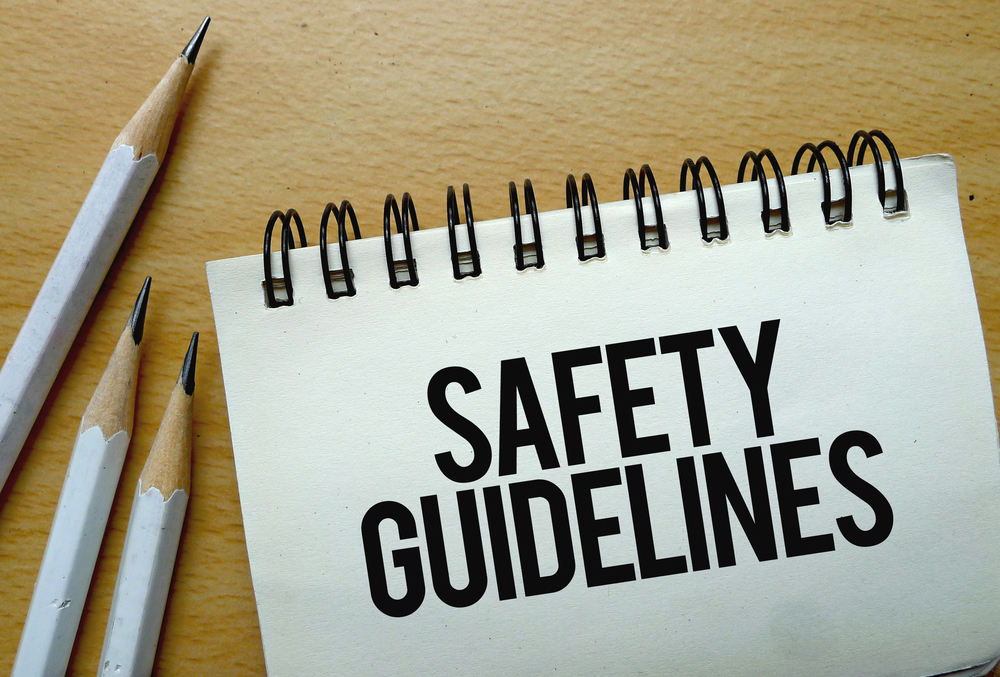
I like your point though, Jim, about the concept of some of the stuff that we deal with, especially in the health and safety arena. And sometimes in the HR arena, I can imagine, is the consequence of stuff that goes on beneath the surface. And for us that’s really where we want to operate, right? We want to operate beneath the surface before it becomes a problem. And I think that that’s what we’re really trying to achieve every day.
Justin Scace: Yeah. Actually, I’d like to play off of that a little bit. One of the things that Jim just mentioned is that sometimes misunderstandings among employees can happen. It’s great that your two departments manage conflict very well. But from your perspective, what are the most common employee perceptions, both positive and negative of EHS and HR? And how do you work to improve any negative perceptions of your departments within your organization?
Walt Malone: Yeah, so I would say one of the negative perceptions is that HR is just there for purposes of controlling behavior and bureaucracy. And so we work really hard to really try to establish an environment that supports us not being bureaucratic, really trying to make decisions quickly, to try to get back to people quickly, to be very responsive. But I’d say even more than that, a foundational concept that we have is the idea that we tend to try to focus on general principles versus detailed rules.
In a lot of companies, they have policies, and the policies pretty much drive the decision making and we have very few policies. Our idea is to give supervisors and leaders some guiding principles, and then look at the unique situation that you’re dealing with and then do the right thing. And so by unleashing some of that, so a lot of people that come into our company from other publicly traded companies, they quickly, when they have an issue, they call HR up and say, “Well, what’s your policy on this?” And so if anything, it may be frustrating because we say we don’t have a policy. It really kind of depends on the situation, what are you dealing with?
And then we begin to work through that with them and start to build their capability to see, hey, this is really your responsibility to really figure out what’s the uniqueness of the situation. And then how should we go about treating that scenario? It could be an employee issue. It could be a number of different things. I think that that’s kind of a perception that can be formed, particularly in a lot of companies that, you go to HR, you’re going to get an answer about a policy. And so that could actually be frustrating because we’re not given answers, and we’re trying to help them think through the situation and then really become … I always say, come along beside them to help them think through that, and then figure out what’s the right thing to do on behalf of both the company and the employee to get the best outcome.
Sheryl Corrigan: Yeah. Walt, really nailed it. In our company, there’s a real focus on individuals being able to make or being empowered, I should say, to make the right decisions for themselves. We’re here as leaders and as capability groups to provide the information and guidance, those general principles, that Walt talked about. But at the end of the day, it’s individuals and their supervisors who make decisions on direction. And so I think that one of the things that we really focus on at least in the EHS area is the notion of learning versus blame, right?
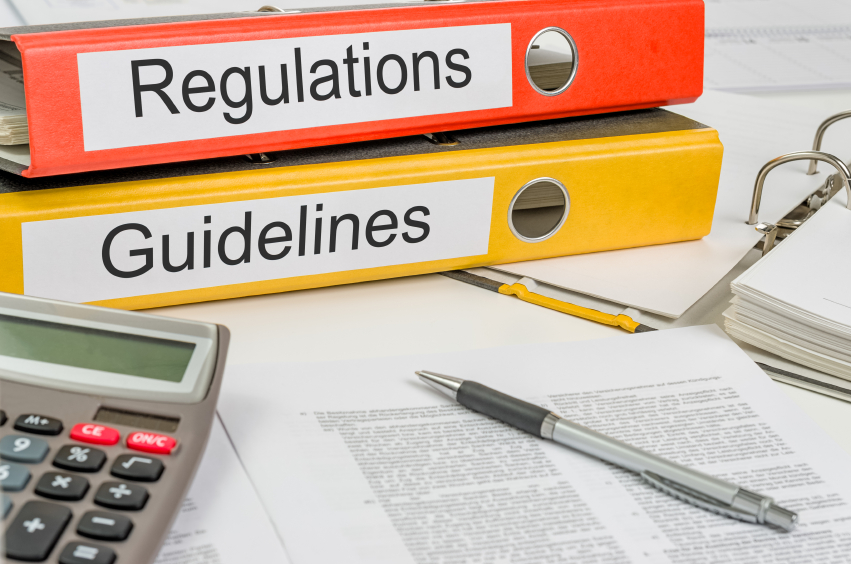
You guys may or may not have had the experience of working in an operating environment, but in historical perspectives, health and safety folks can be perceived or had been perceived as the cops, right. The health and safety guy walks down the production floor in the processing units and says, “Oh my gosh, you didn’t do this, A, B and C.” And pokes people in the eye about not following the rules. And at Koch, what we try to understand is, to Walt’s point, the context. Okay, what’s going on today? What’s happening? What are the risks? What is the information that you as an operator or you as an employee need to help you create the environment that you need to work safely and also to be productive? How can I as your leader or your supervisor help you do that? It isn’t about, you got to follow this rule, this rule, this rule, and this rule. It’s more about, we want to create a safe and healthy workplace for you. How do we do that together?
Now having said that, that doesn’t mean that it’s the Wild West, in our operating companies or in our Salesforce. We do obviously have rules that we need to follow, and those are the regulations, and that’s why compliance is so key to us. But we also recognize that regulation doesn’t always get you to where you want to be. Sometimes it’s just not enough. And so having that mindset around general principles and learning and context versus rules and blaming can be super helpful. And I think that it is the secret sauce to Koch Industries, what really creates our competitive advantage compared to other companies of our size operating in the same kind of sectors that we operate in. We really try to empower our employees in a way and unlock their potential to take what they do and make it better every day.
Jim Davis: I can definitely say from experience that HR people also often feel like they’re being labeled as the police.
Sheryl Corrigan: I know, we share that, right. But we want folks to look at us as a resource and that’s what we really try to do.
Jim Davis: Yeah. I mean, it’s a real challenge. I don’t think the employees understand the pressure that HR people are under from leadership. And they really are the glue between both parties whether everybody understands that or not. I want to shift gears briefly and talk about crisis preparedness and managing ongoing crises. Obviously we’re all still within the coronavirus pandemic. And it raises the question about how teams like HR and EHS work together to prepare for crises and also to manage them.
Sheryl Corrigan: This is pretty topical, huh? We’re all kind of living it, not just in the workplace, but also in our personal lives. So Koch is no different than any other company, we for sure have emergency operations plans and they can be triggered by natural disasters. We have a number of facilities that are located in areas that can be affected by hurricanes. And so every year, starting June 1st we’re dusting off our hurricane preparedness plans and so forth. So we are not a stranger to crisis management and crisis preparedness across our companies. I think that this recent pandemic though is a pretty interesting riff if you will, on what we typically do.
And I was kind of puzzling over this the other night, as I was thinking about, what’s really different here. And I think for me, and I know Walt can jump in, on the EHS side, most of the crisis management or preparedness that we do is short term, right? A hurricane, it’s a short-term event. Now, some of the consequences of a hurricane can be a little bit longer term. But in the case of this pandemic, we’ve gone from short-term real crisis to now sort of a midterm solution. And then probably now we’ll be drifting into a longer-term kind of perspective.
And at each phase, we’ve had to adjust and think about different ways to help our employees, and kind of going back to what I said earlier, create the information and the guidance to help them make better decisions. In the early part of a crisis, you’re really focused on in the minute, right? The short-term, in the minute, in the hour, sometimes in the day. Then kind of stretches into, well, what do we need to do this week? And with some of these longer-term issues that we’re dealing with, now it’s into months. And so it’s been pretty interesting, the other … So that time horizon and stretching out has been, I think, a challenge to recognize, and then also to pace if that makes sense. And I know Walt might have some more to talk about there.
I do think though that at the end of all of this, whether we’re talking about hurricanes or pandemics, the focus here really needs to be on our employees in the field, and what can we do for them? And I know from the HR perspective, we’ve had to do a lot, there are some very specific things that we’ve done to help our employees cope, certainly in the short term. And maybe Walt you want to talk about a couple of those.
Walt Malone: Well, I mean, just clearly, early things that you have to do is figure out how do you manage through pay practices and different things like that to give people the incentive, that when they’re not feeling well, they should stay at home. We try to look at some of the base systemic type things that could really give them the assurances that, man, if I go to work because I need a paycheck. So we tried to design some of the aspects of how we respond to really try to encourage them if they’re not feeling well, that they should actually stay at home, and give them the incentive to really try to do that.
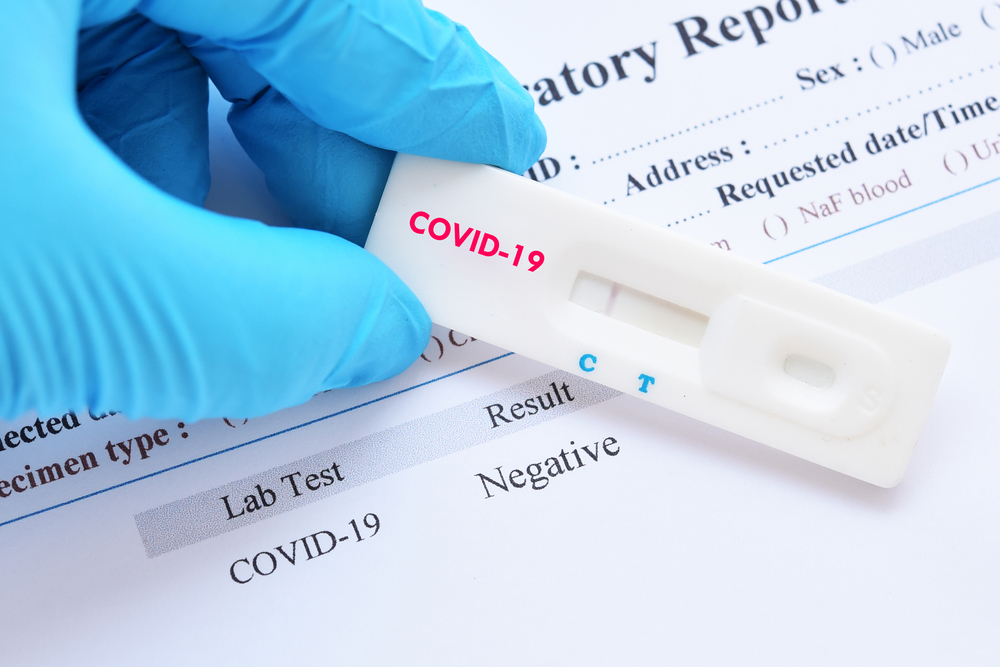
And then along the way, if they have exposures, how do we handle those so that we can get the … we don’t contaminate other employees if they’ve had an exposure. And so our approach to quarantining, and just all those types of things all come together to really try to put us in the best possible position where we can, because many of our operations are considered essential. How do we continue to operate, but do that in a way that truly gives people the proper incentive to do the right thing.
Sheryl Corrigan: Yeah. Now, that’s exactly right. Because we were all kind of faced with, all right, what do we do here? This is new. And something that our employees, especially our hourly employees were very, very concerned about, and rightly so. And so what could we do to help drive that well-being?
Walt Malone: The other thing I would mention too, is we quickly went to … under our benefit plans we provide all preventative care, a 100% the cost of that. We quickly added all of the costs for testing and other aspects of COVID-19 into that. So that again, we’re really trying to align the incentive of the employee so that if they weren’t feeling well, they went to the doctor, they got tested, it wouldn’t be out of pocket for them.
Sheryl Corrigan: Yeah. And one last thing that I think is really important to talk about, and that is, at Koch Industries, we went through at the very beginning of the discussion today, you went through, Jim, I think went through the list of stuff that we make. We are the guys that make toilet paper, hallelujah, that was a big deal. We’re also the guys that make gasoline and diesel fuel to move products back and forth. We’re the guys that make fertilizer for our farmers so that we have enough food. And so it goes on and on. Bottom line is, the folks who work for us, our employees are making essential products. And so we were an essential business, and I want to just make sure that we recognize that, well, many other folks who are more office-based were working from home. Our employees, were going to work every day, even during the very uncertain times earlier this year, where things were just unfolding.
And so they had an enormous commitment and continue to have an enormous commitment to you and me, by going to the workplace. And Walt’s team and my team and all the other capabilities, and the site leaders, and everybody else, in Koch Industries has really worked hard to support those essential businesses. And I just want to give a shout out to everybody who’s on the front line, they are kicking it every day and doing it in a way that makes me personally really proud to work for Koch.
Justin Scace: That’s great. Thank you. We’ve heard a few stories from you both so far. But do you have any specific recent examples of how you specifically brought your HR and EHS teams together to accomplish something great at your organization?
Sheryl Corrigan: Well, I like to think that we do it every day. Every day is a good day. I had a friend who always said that, that every day is a great day because what’s the alternative. I like to live my life according to that. We talked about COVID, I think that that’s pretty much in the forefront of everyone’s minds right now. And one of the great solutions that Walt already talked about is really looking at our benefits and making sure that we were adjusting as we learned more and needed to meet the expectations of our employees.
I think working from home and adjusting how we view that has been a huge success, and we’ve worked while the whole conundrum of the pandemic has been the transmission and how to reduce the spread of transmission. The real focus has been on the HR aspects rather than the health and safety aspects at our company, because of the fear and anxiety that people have about getting sick and potentially having their families get sick. The HR group has been the focus, I think. Wouldn’t you agree, Walt? That you have been there.
Walt Malone: Yeah. One of the things that I would say is, when we first, I think probably the best and most recent and relevant example is this COVID-19 interaction, because we quickly formed a cross-functional team with legal public affairs, a lot of people in HR and communications. And so when I look at this, I look at this not just as an HR and EHS effort, but it was a Herculean effort from a lot of different, of our capabilities all coming together, really trying to have good knowledge systems for what’s happening.
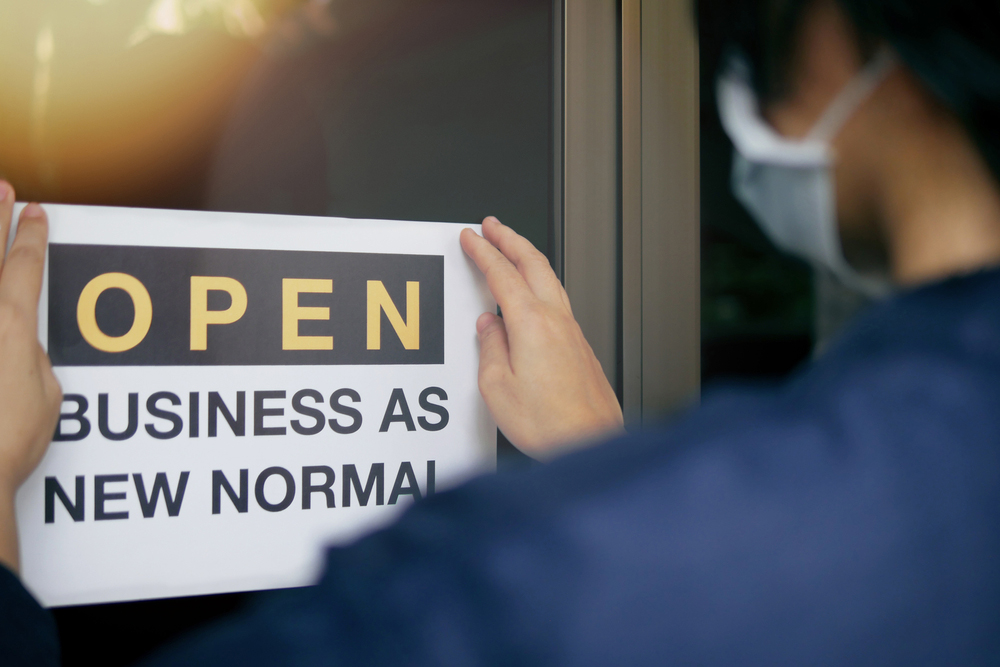
I think the real challenge that we faced here was, each state had different guidance that they were receiving and we were trying to … and we’ve got operations all over the US, so there’s no way we could treat it as a one size fits all. We had to really collaborate and organize and communicate, and seek as much knowledge as we could from our public affairs group who is connected and really try and understand at the state level, what was really going on, so that we could actually be responding to that appropriately to our workforce. And so that it was meaningful and connecting, because workforce is reading all this stuff every day. They’re seeing all the media outlets, and they want to make sure we’re thinking about it in the context of what’s important to them.
And so I think that, there’s a lot of things we do every day. I think a lot of those things kind of get overshadowed because we’re busy doing our jobs, but I would say this one was really an outstanding effort from a broad spectrum of capabilities across the enterprise, obviously HR and EHS played a critical role, but so did so many others, so that was it.
Sheryl Corrigan: Oh, yeah.
Walt Malone: I feel really outstanding about that because you could see each part figuring out how they could make a difference in making sure that we were really connecting to our workforce.
Sheryl Corrigan: That’s a great point, and we are global. So things started to evolve in China obviously far sooner than they did in the United States. And so we were involved in that, and kind of trying to understand how we could help folks there. And so as the disease progressed across the globe, we were able to bring folks together. And to Walt’s point, really focus on those general principles versus detailed rules because rules don’t work when you’ve got a whole bunch of different guidance or regulations that don’t always match up, right?
So you’ve got to really get information to folks so that they can make good decisions. And that was really the vision around our COVID response. It was, “Hey, we’ve got to make sure that every employee has access to what they need to keep themselves and their families and their communities healthy.” And that was really kind of what we did. I think that that’s been a real success for us. I think another area that on a parallel path that we’ve really been focused on for the last several years at Koch, and certainly across the industry is really the transformation that technology is bringing in. So HR and our EHS capabilities are really working with our employees to make sure that as we transform, as we continue to transform our businesses and move from manual processes to automated processes and move into different businesses and industry sectors, that the well-being of our employees and their learning and development is front and center for us.
Jim Davis: We just have one last question. HR is always talking about creating a positive, engaging work culture. And EHS is always striving to build a healthy safety culture. I’m really just curious how do these goals and processes for achieving them intersect?
Walt Malone: Well, I would say it starts with our market-based management philosophy. We have eight guiding principles and I won’t overwhelm you with all eight of those, but principle number two is around putting safety first, and it’s around stewardship and compliance and really trying to bring together a safe work environment for our workforce. So when we take these principles that we have really seriously, they provide the foundation for how we work and how we interact and how we create the culture of the organization. We have a number of other aspects of market based management, but I think the convergence zone starts day one when employees start with a company and they start to see these guiding principles, and that we integrate these guiding principles in our philosophy into almost everything we do from an HR standpoint. And I think we do the same thing from an EHS standpoint.
I believe that the convergence zone starts there because we take those very seriously, we act on them. We set a very high bar there. And the other thing I like to say is what’s really unique about Koch is that we try to treat people as individuals and not as, from every aspect of what we do from how we define our RREs, which are roles, responsibilities, and expectations. A lot of companies will use detailed job descriptions and then try to fit people into the job description. Whereas we kind of take the opposite approach. We start with the employee and we look at what their real strengths and capabilities and interests are. And then over time transform their responsibilities around those strengths. And when they can operate within their area of strength, they see, they just contribute in such incredible ways and meaningful ways. And at the same time, they find a tremendous amount of fulfillment from that.
Same thing with our compensation structures, we don’t go out there and just give people a target. Let’s say you get … your incentive is 10% of your base pay. We don’t have any of that type of structure because we want to reward people for what they really contribute to the organization. We really do a lot of work to try to assess that. I think there’s a lot of things in the EHS front that’s similar to that, but I think it all starts with those guiding principles.
Sheryl Corrigan: It does, and the individual. And one thing that I think is really different about Koch is, when you go to other companies, often folks will talk about, well, this is our safety culture, and this is our HR culture, and this is our business culture, but they’re all kind of independent of one another. We have one culture. We really don’t talk about safety culture. We don’t talk about HR culture. We talk about our guiding principles that Walt talked about in our vision. And that is, are we really helping people? Is what we’re doing actually better than what somebody else could do? And if that’s the case, it’s “Katy, bar the door”, how can we empower our employees as individuals to be able to reach, be as good as they can be, reach the highest summit-
Walt Malone: Reach their full potential.
Sheryl Corrigan: … reach their full potential, whatever the words that you want to choose. But it’s all about look, every individual, what do you need? How can I help you as a leader get there? My job is to clear barriers and let those folks just get out there and create. And it’s amazing when that is your culture what you can achieve. And I think Koch industries is pretty successful compared to other similar kinds of companies, because of what we do, how we do it, and what we believe.
Jim Davis: Well, thanks so much for those insights. We’ve reached the end of our time today, but thank you again, Walt and Sheryl, for taking the time to join us today on this crossover episode of HR Works and EHS on Tap.
Sheryl Corrigan: Thank you both.
Walt Malone: Thank you.
Sheryl Corrigan: Really appreciate the opportunity.
Justin Scace: You’re very welcome. We were glad to have you. And thank you also to our listeners for tuning in today. Jim and I want to remind you to be on the lookout for new episodes of both the HR Works and EHS on Tap podcasts, and ensure you’re staying up to date on the latest and best practices and compliance obligations with the HR Daily Advisor and EHS Daily Advisor. So until next time, this is Justin Scace for EHS on Tap.
Jim Davis: And this is Jim Davis for HR Works. Thanks for listening, and we’ll see you next time.
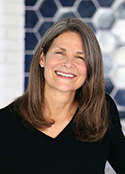
Sheryl Corrigan is director of environmental, health and safety for Koch Industries, Inc., providing oversight of Koch companies’ compliance with regulations and internal policy, and tracking and ensuring follow-up on emerging issues. She also serves on the Board of Directors for Guardian Industries, a Koch Industries subsidiary. Prior to assuming this role, Corrigan was Senior Vice President of Environmental, Health and Safety for Flint Hills Resources, LLC; a subsidiary of Koch Industries. Before joining Koch, Corrigan was commissioner of the Minnesota Pollution Control Agency, advising the governor and helping set the strategic direction for the state on environmental matters. She has also worked for 3M in a number of positions focusing on environmental, health and safety operational excellence. Corrigan is a member of the GreenBiz Executive Network. She received a bachelor’s degree in geology from the University of Minnesota Institute of Technology.
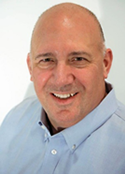
Walt Malone is vice president of human resources for Koch Industries, Inc. Malone is responsible for Koch Industries’ corporate human resources team and the global Market-Based Management® capability which provides training and development services to Koch companies. He serves on the boards of Georgia-Pacific Equity Holdings LLC and Koch Business Solutions, LP, both subsidiaries of Koch Industries. Most recently vice president of global human resources for INVISTA, Mr. Malone joined Koch in 1991, serving in a variety of human resources roles. Mr. Malone earned a bachelor’s degree in agricultural engineering from University of Wisconsin-Madison.
Based in Wichita, Kansas, Koch Industries, Inc. is one of the largest private companies in America, with estimated annual revenues as high as $110 billion, according to Forbes. It owns a diverse group of companies involved in refining, chemicals, and biofuels; forest and consumer products; fertilizers; polymers and fibers; process and pollution control systems; electronics, software and data analytics; minerals; glass; automotive components; ranching; commodity trading; and investments. Since 2003, Koch companies have invested nearly $120 billion in growth and improvements. With a presence in more than 70 countries, Koch companies employ 130,000 people worldwide, with about 65,000 of those in the United States. From January 2009 to present, Koch companies have earned more than 1,300 awards for safety, environmental excellence, community stewardship, innovation, and customer service. For more news and information, visit www.KOCHind.com.
